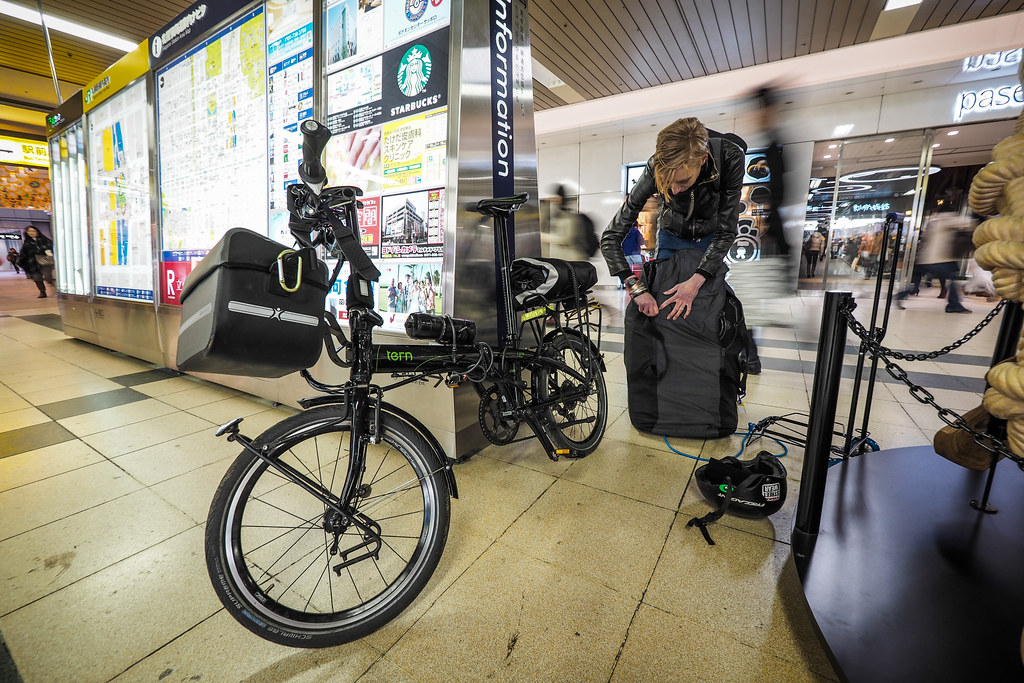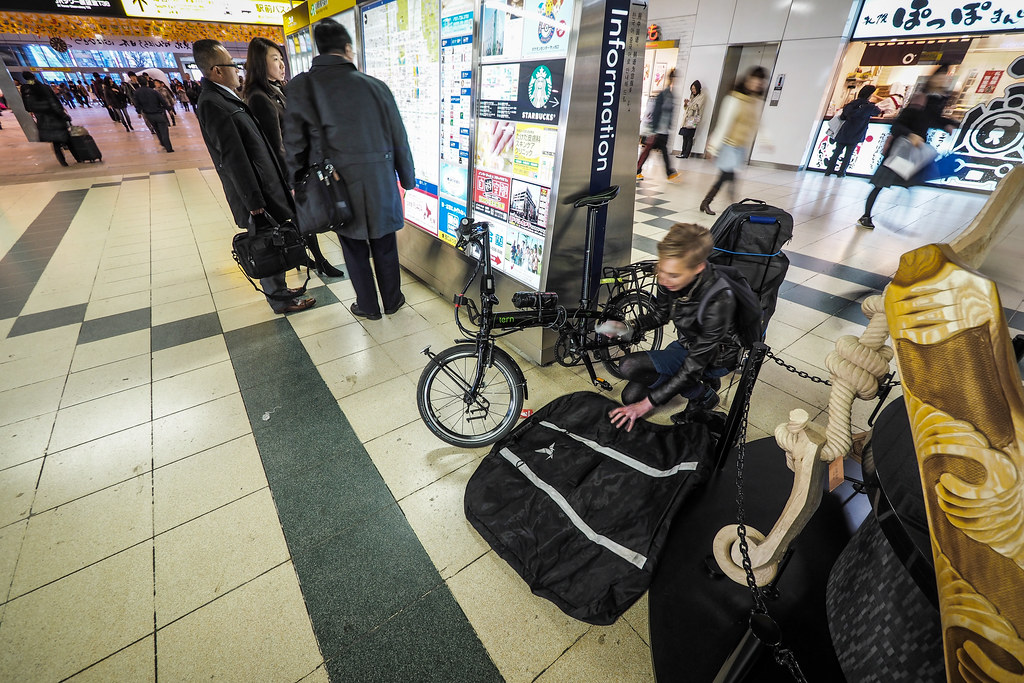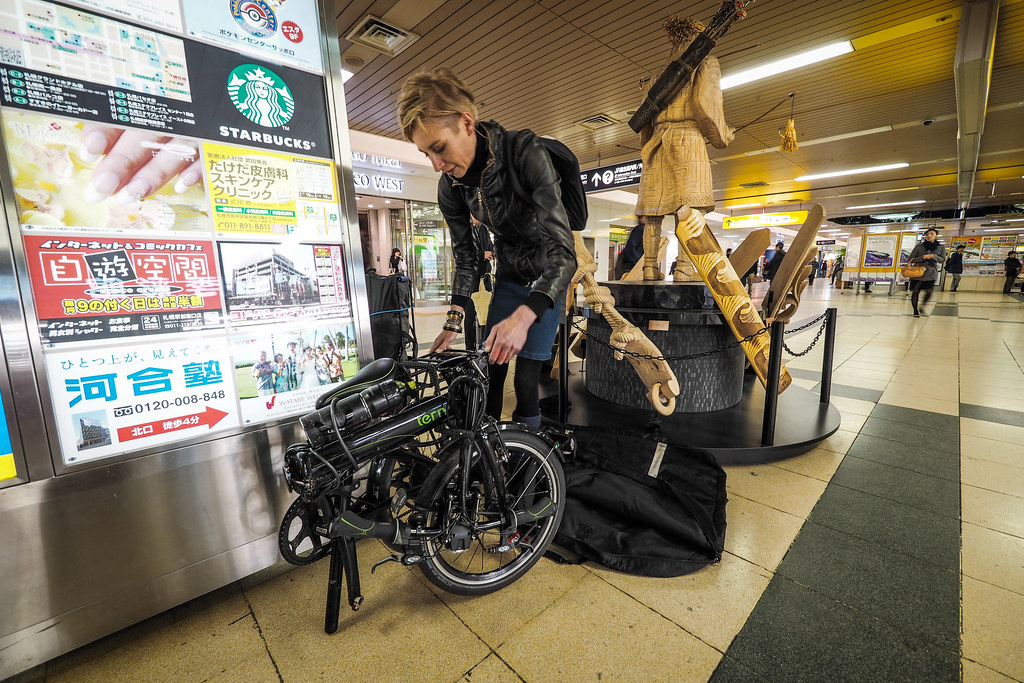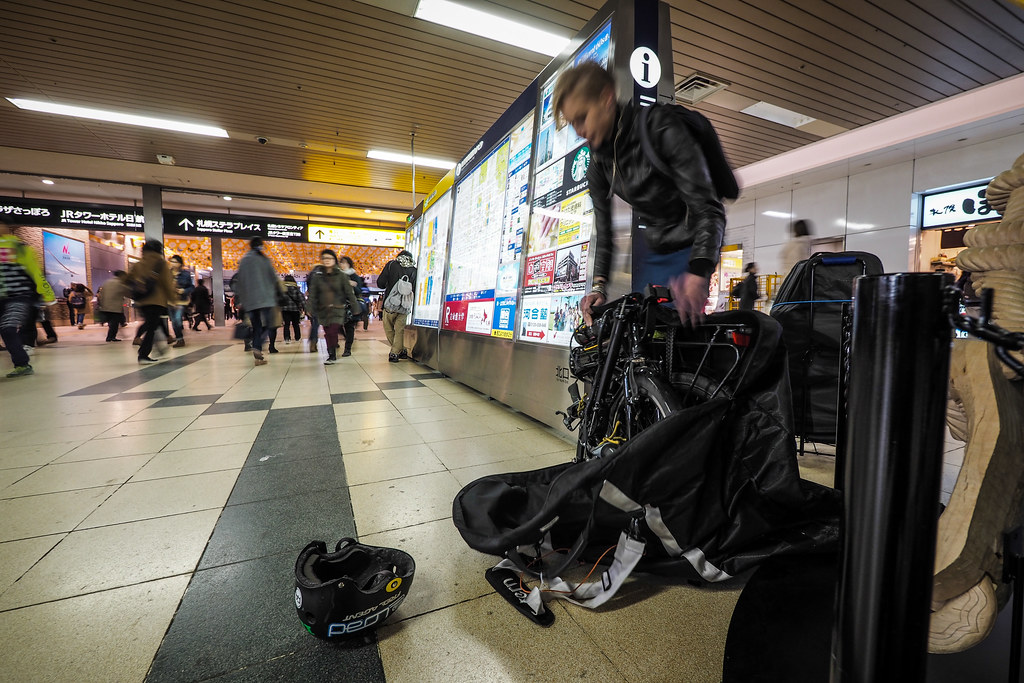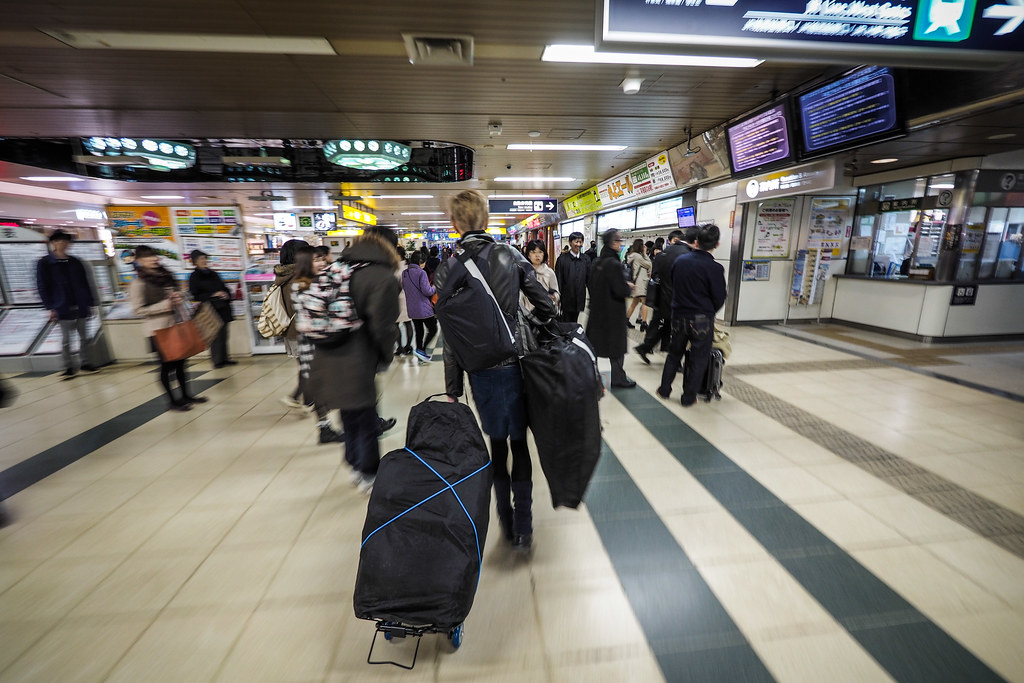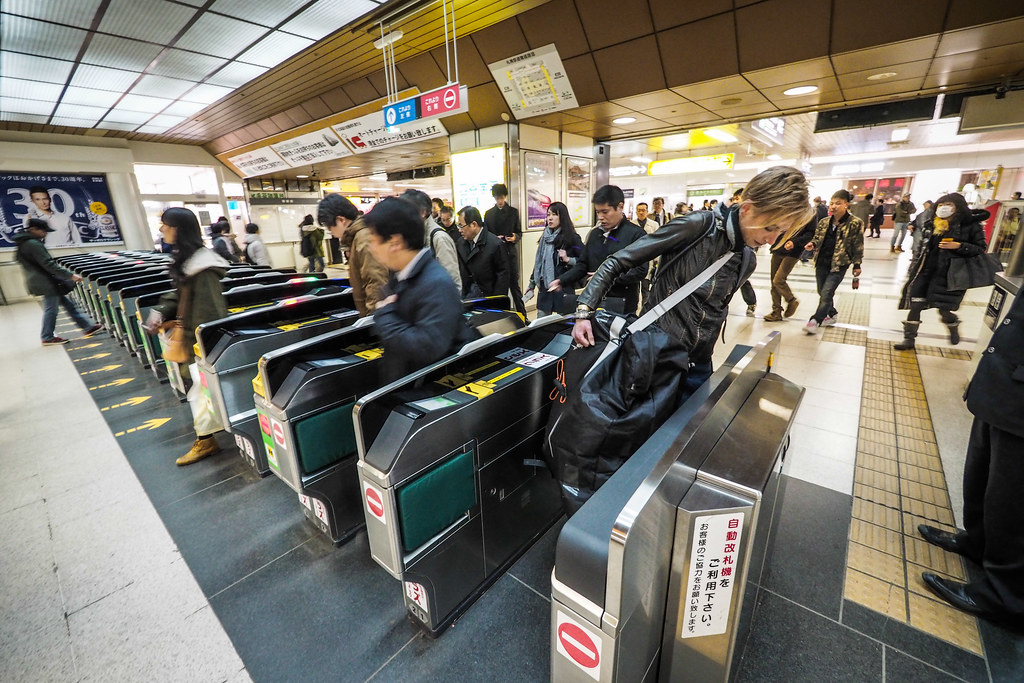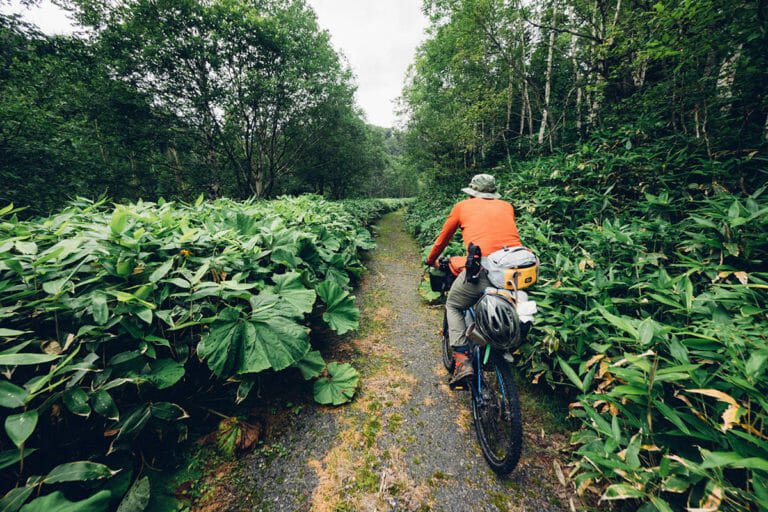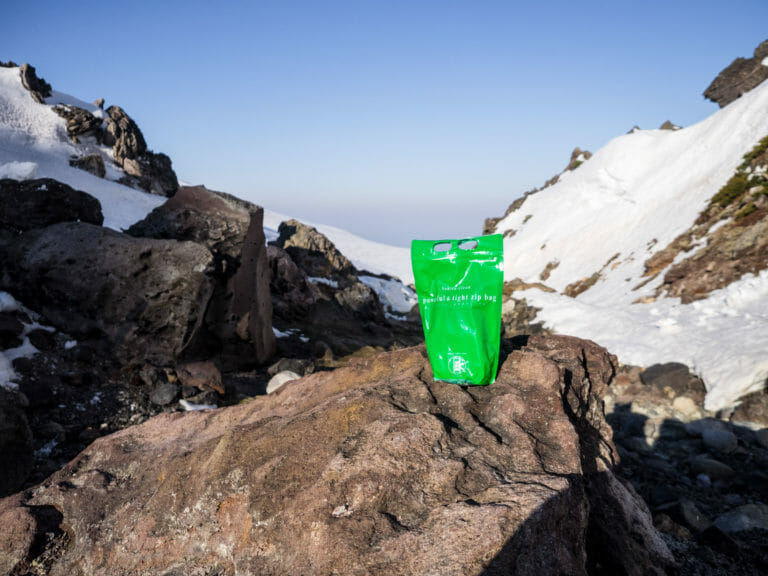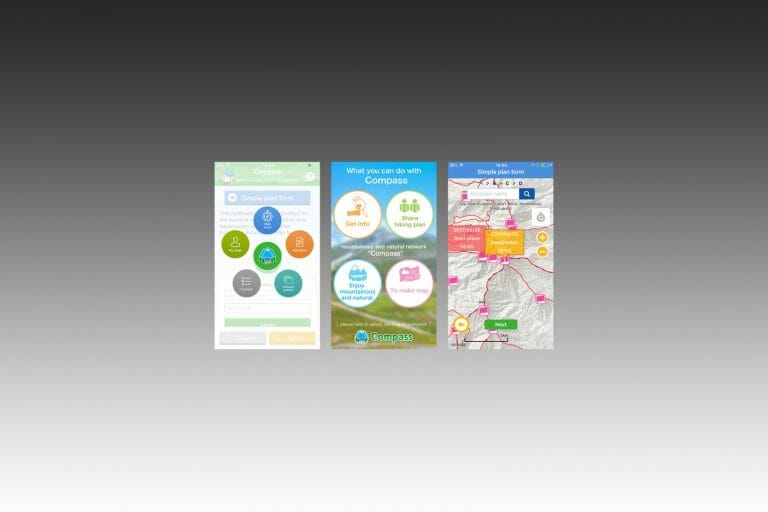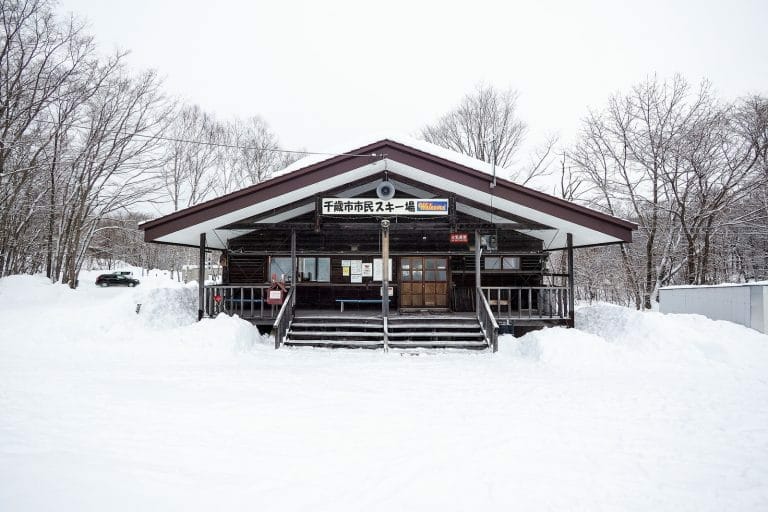In Japan, traveling on the train with a bicycle is both a blessing and a curse. These are the pros and cons, as I see them.
Pros
- You don’t pay extra for taking a bike on the train in Japan. Even on the mighty shinkansen bullet trains. Nada.
- You can take a bike on any train at any time on any carriage.
Cons
- You have to partially dismantle the bike. That is, at the very least, remove the front wheel. If your bike is of the folding variety, you’re off the hook – no dismantling required.
- The bike must be completely covered with a bike bag (or wrapped in something such as a 500 yen large blue tarpaulin).
- There are no ‘bicycle areas’ on the trains. This means that if your bike doesn’t fold down small, you may need to stay with your bike and move it when people want to move between carriages etc.
- TOP TIP: Trains stop at pre-determined locations on Japanese platforms; find the end or front of the train that you’re fixing to board – end or front carriages usually have less people in them, and less thoroughfare. You’ll spend less time stressing about whether your bike is getting in someone’s way. I.e., best to put your bike at the extreme end or extreme front of the train, in the carriage entrance area. Also, use the handrails etc to secure the bike from falling over…then just enjoy the ride.
Step 1
Pack your panniers into a lightweight fold-up sack, and attach this to your fold-up trolley. You do have a lightweight fold-up trolley, right? Virginia bought this one for $15 at an electronics store in Sapporo.Step 2
Panniers snugly ensconced in their bag and trolley, time to sort out the bike. Prepare the bike bag.Step 3
Fold the bike. Virginia travels extensively around the world on academic conference trips and the likes with her Tern Link P24h. The ‘N-fold’ is very simple, and best of all, the bike stays standing upright once folded.
Step 4
Get that bike in the bag. Virginia’s bike bag is a Tern padded ‘Stow Bag’ made of extra heavy duty fabric and has some degree of padding. She puts the bike on planes just with this bag and the bike seems to have survived multiple inter-continental flights.
Step 5
Shoulder the bike-in-the-bag, grab the trolley, and head to the ticket dispenser, parting the crowds like Moses and the Red Sea.
Step 6
Buy the ticket.
Step 7
Squeeze through the gates and look for an elevator up to the platform.
Great breakdown by Two Wheel Cruise




